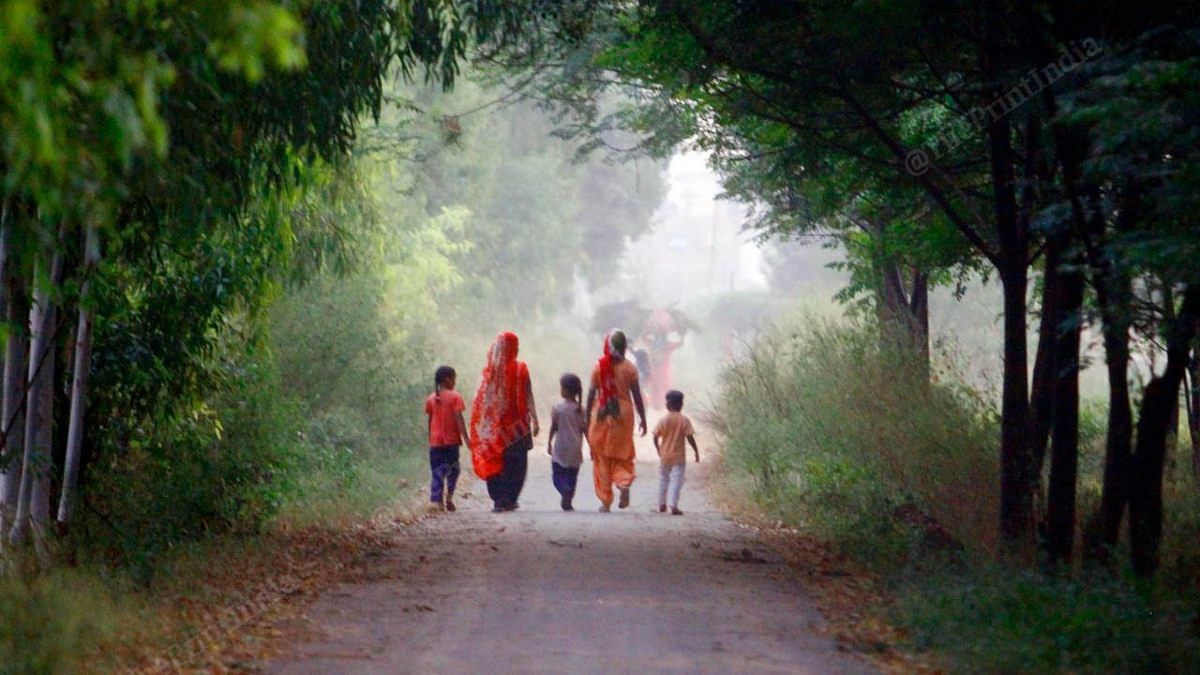Pa jab hurts. India’s breadbasket was the country’s wealthiest state for decades before it began to lag behind several states, notably its neighbours. Besides Delhi and Goa, Punjab was the wealthiest state, building on the green revolution for decades. India’s modern economic growth since liberalization in 1991, and more significantly since the NDA-1 years, has seen all states make considerable gains. There has been a general upturn in the economic tide with pro-growth reforms and major infrastructure investments across the country.
Many states that were significantly poorer than Punjab until the early 2000s – Haryana, Gujarat, Himachal Pradesh, Maharashtra, Karnataka, Tamil Nadu and Kerala – quickly overtook it by achieving major economic growth. Not only has Punjab fallen behind these states, but the gap has widened considerably over time, so that today an average Haryanvi is 1.5 times wealthier than an average Punjabi.
There is a big Literature this explains the unsustainable nature of agriculture in Punjab, both economically and ecological perspectives. The changing nature of India’s global economy, increasing agricultural productivity in other states and improving supply and distribution capacity mean that food security is no longer a primary concern. as she once was. Several researchers have highlighted these issues in insightful detail over the years.
In his general research and frequent columns recently, India’s leading agricultural economist, Ashok Gulati, has underline the need for farmers in Punjab to diversify and shift from minimum support price (MSP) based paddy and wheat to high value crops and livestock. But ultimately, given relative productivity, the share of the agricultural sector declines as the share of manufacturing and services in output and employment increases over time. Punjab, unfortunately, has witnessed widespread deindustrialization, especially since 2010.
Read also : Farmers and workers instead of a privileged few – India is finally moving in the right direction
Exit from companies, entry from unemployment
Manufacturing clusters in Jalandhar, Gurdaspur, Mandi Gobindgarh and Ludhiana have struggled over time and reported lack of growth and widespread closures. One of the major reasons for this is Punjab’s non-competitiveness with other Indian states. Several states, including neighboring Himachal Pradesh, Jammu and Kashmir and Uttarakhand, have improved their business environment and offered incentives such as 100% exemption from income tax and excise, subsidized working capital loans, etc.
There have been significant relocations of small and medium enterprises from Punjab to other Indian states over the past 15 years. These have included a large number of pharmaceutical companies for Himachal Pradeshand cotton yarn, clothing and woolen businesses to Madhya Pradesh. Similar trends have been observed in the bicycle and sports equipment industry. Cheap imports from China have only made matters worse and intensified the process of deindustrialization throughout Punjab. Ironically enough, instead of competing to retain the industry, Punjab has witnessed other increase in the cost of doing business over time. One of the main factors in this regard is the cost of electricity cross-subsidies for farmers in the state.
An immediate impact of deindustrialization and the plateauing of agricultural growth has been high unemployment. Punjab’s unemployment rate is upper than the national average; the state also has higher levels of youth unemployment. The last economic survey of Punjab highlights the mismatch between employment opportunities and the aspirations of young people, which is driving more and more farmers to sell land to finance the migration of their children to Canada, Australia, the United Kingdom and the United States.
Read also : Indian farmers want parity, not charity. Modi government better not teach them farming
Increase in mental health problems
A deeply disturbing trend that has emerged over the past two decades is mental health problems in Punjab. The latest National Mental Health Survey (2016-2017) revealed that the total prevalence of mental illness in Punjab was 18%, which is significantly higher than the national level. In absolute numbers, there are over 20 lakh people in the state who are mentally ill and majority of them do not have access to treatment.
This is strongly correlated with alcoholism and drug addiction. the prevalence Alcohol addiction is 6% in Punjab, more than twice the national average, while drug addiction is 2.5%, more than four times the national average. National Sample Survey Office (NSSO) data on health expenditure shows that Punjabi households have a higher health expenditure burden than an average Indian household, and also that they rely heavily on exclusively private health care for their needs. These strongly suggest the urgent need to increase public health spending in the state.
In the middle of the Covid-19 pandemicalarm bells are ringing particularly loudly for Punjab – the state with the highest and still rising fatality rate. CFR in East Punjab more than twice the national level. And more distressingly, it shows no signs of waning even as the CFR plummets almost everywhere else in India.
Read also : Farmers draft a bill for the government, demand guaranteed MSP and make buying below that a crime
Deeply in debt
Unfortunately, the state finances of Punjab have been fragile for several years. Latest RBI state finance report shows that Punjab is also the country of India the most indebted State with a debt to state gross domestic product of 40% and interest payments amounting to more than 20% of state tax revenue, the highest in the nation. Over the years, the increase in energy subsidies specifically targeted at farmers, as well as more recent largesse in the form of farm loan forgiveness, etc. all led to Punjab becoming a state with one of the highest revenue deficits in India.
The state’s difficult fiscal situation has limited the scope for much-needed health spending as well as its ability to make significant improvements in competitiveness and productivity in any major sector of its economy.
Punjab is suffering, and beyond palliative policies, the lasting solution lies in fundamental structural reforms of its overall economy and its agricultural sector in particular.
The author is an economist and former member of the Prime Minister’s Economic Advisory Council. Views are personal.

